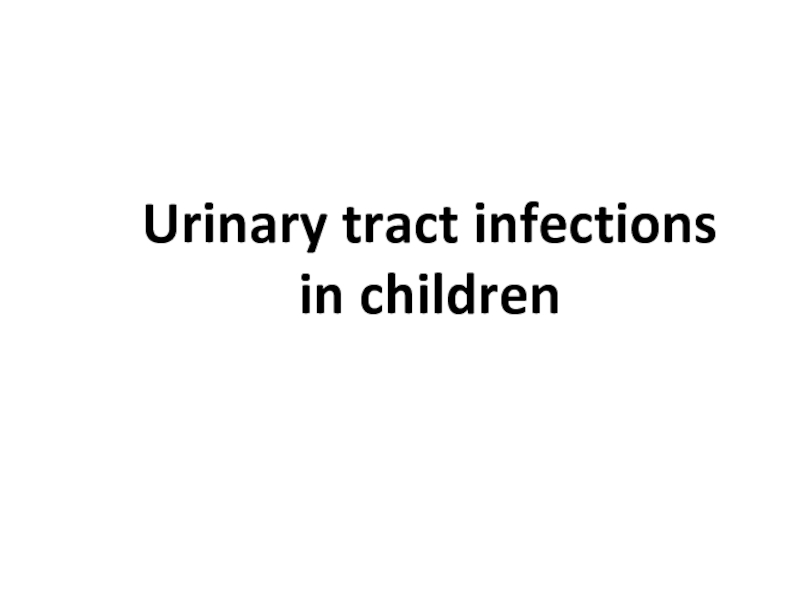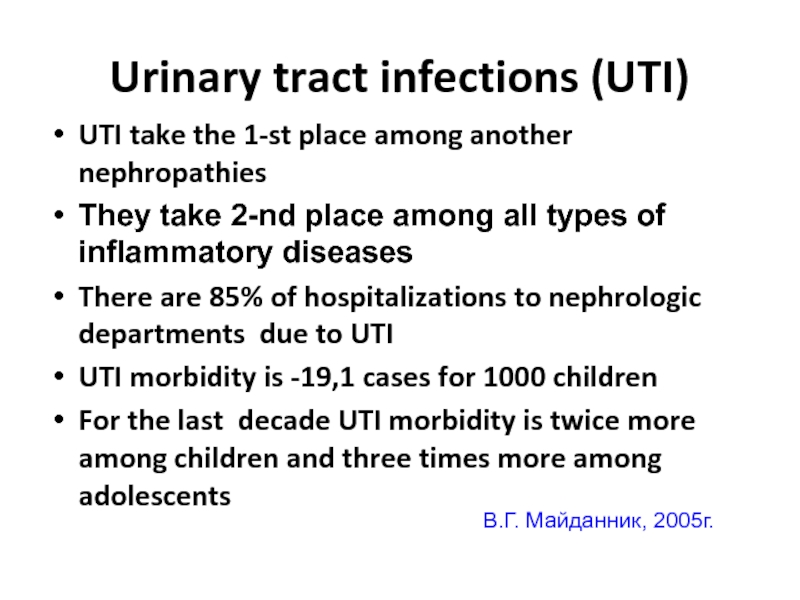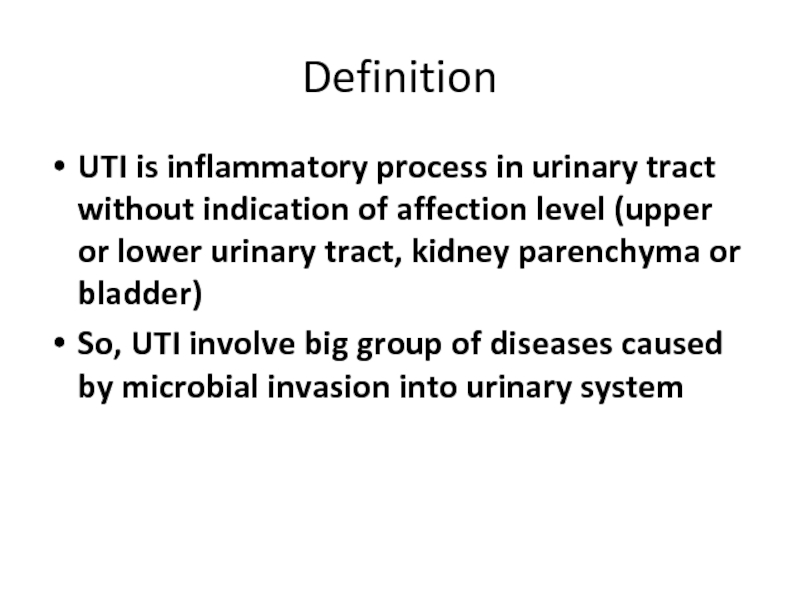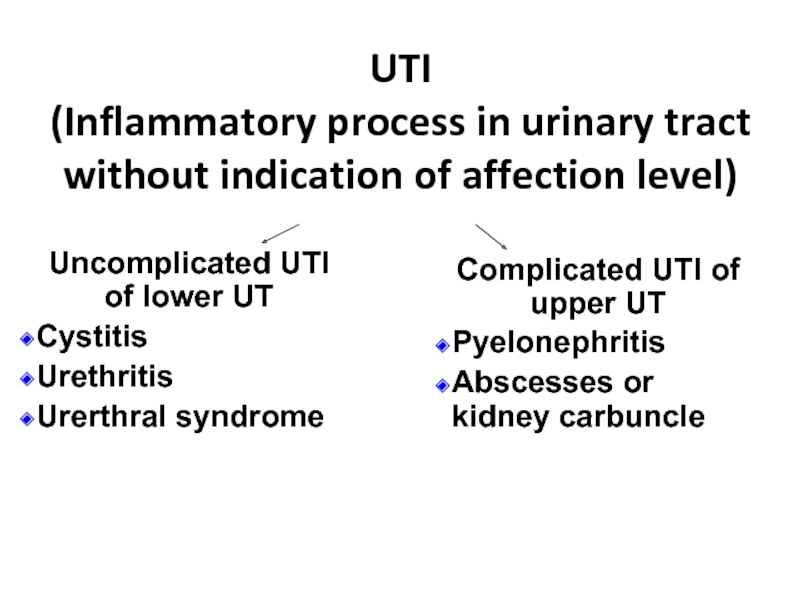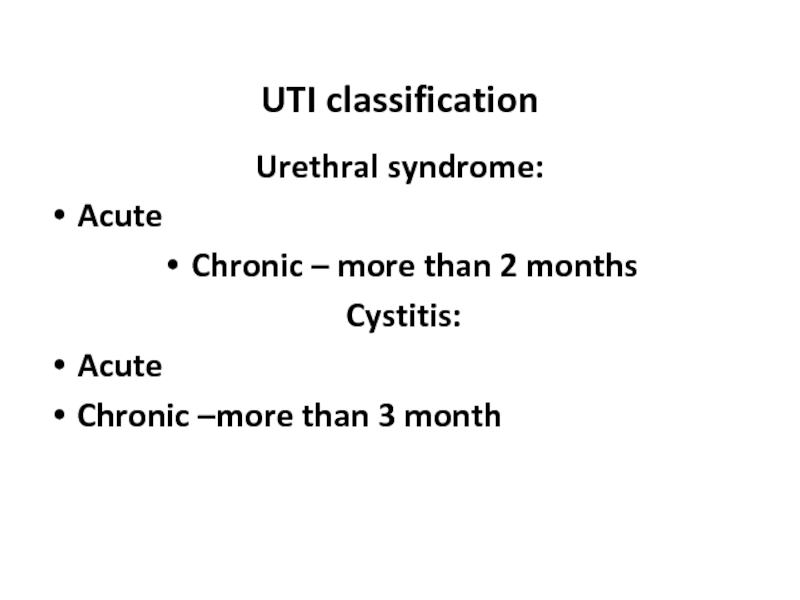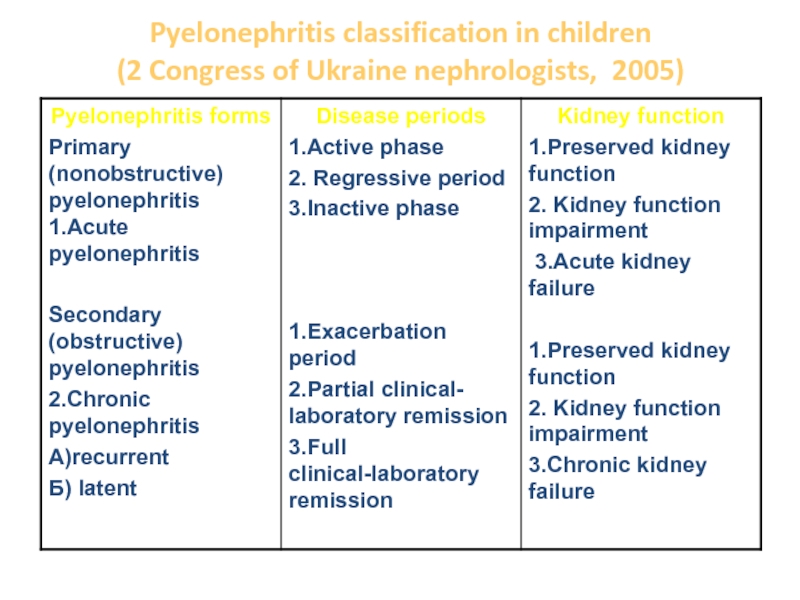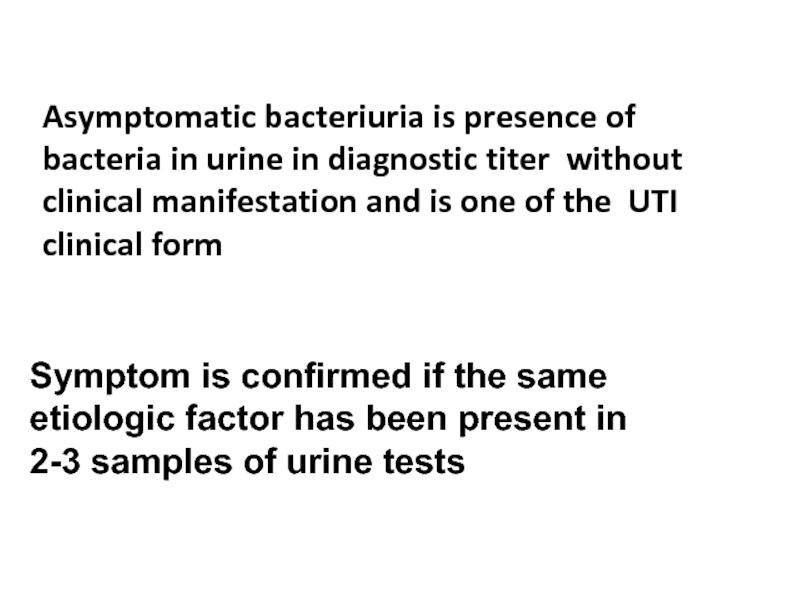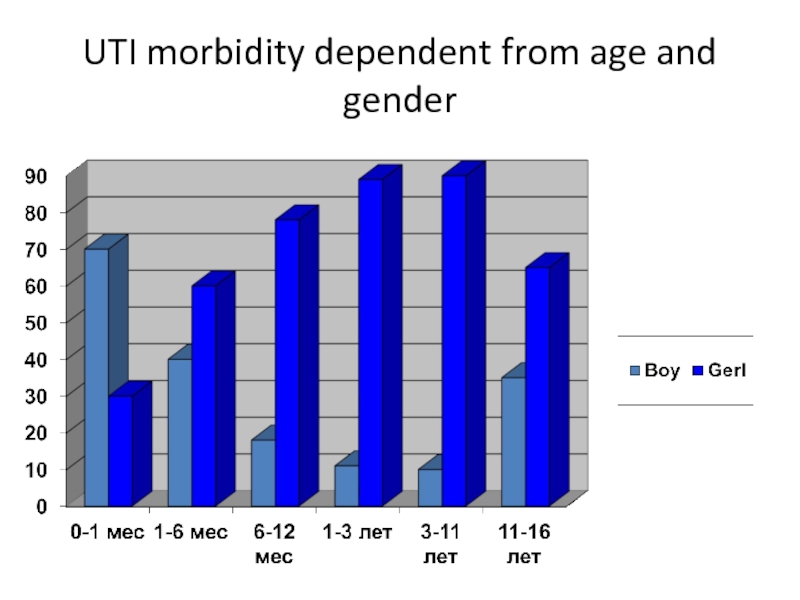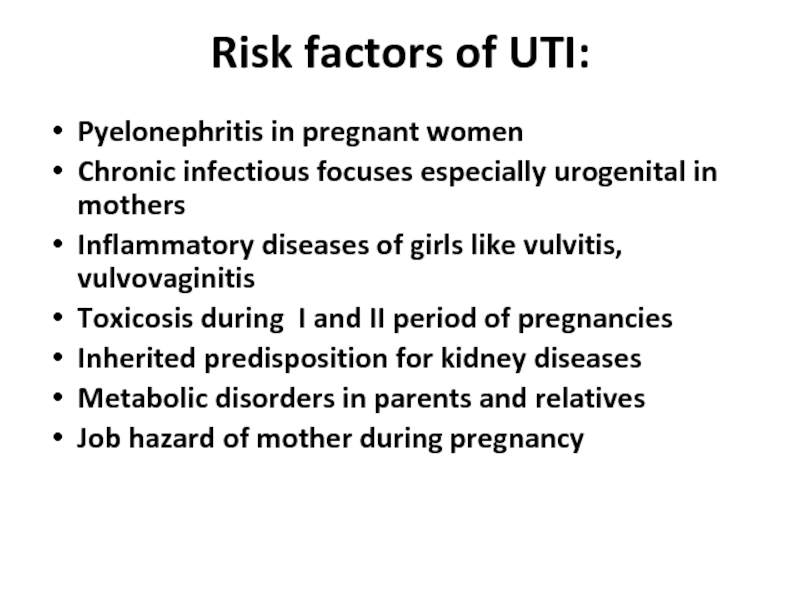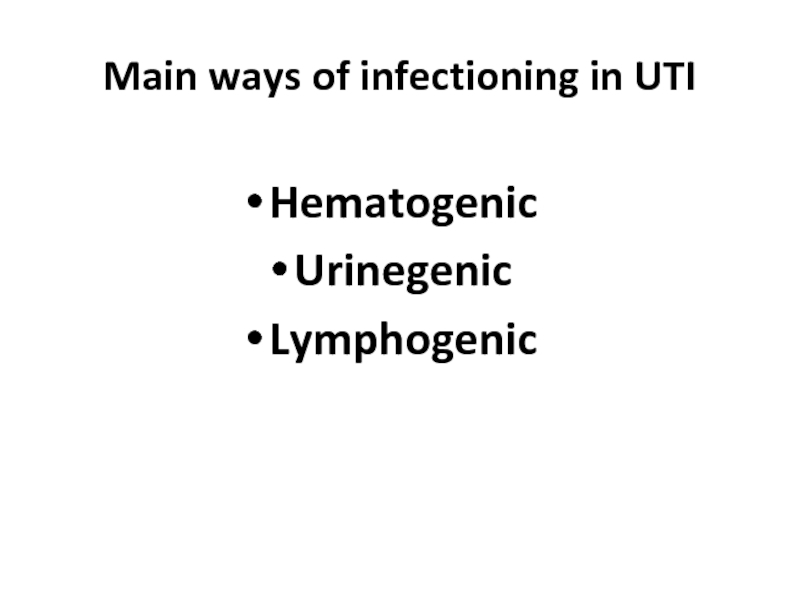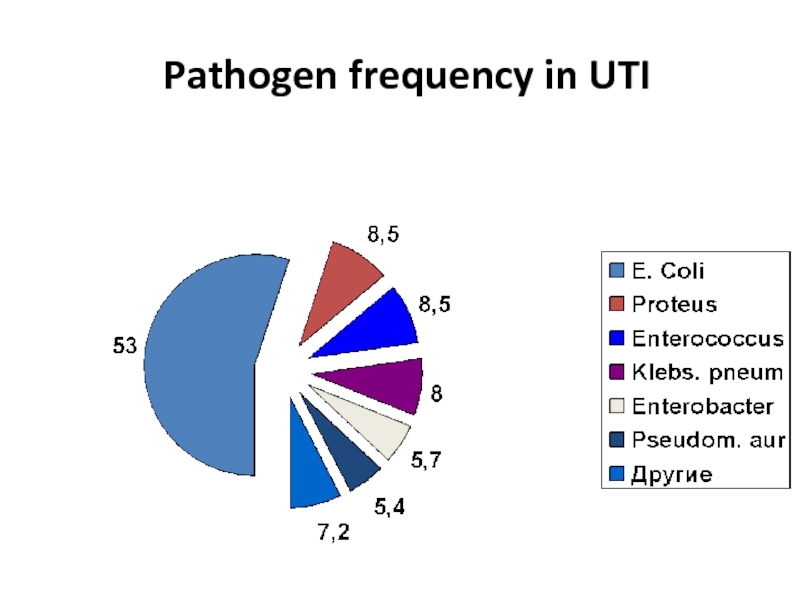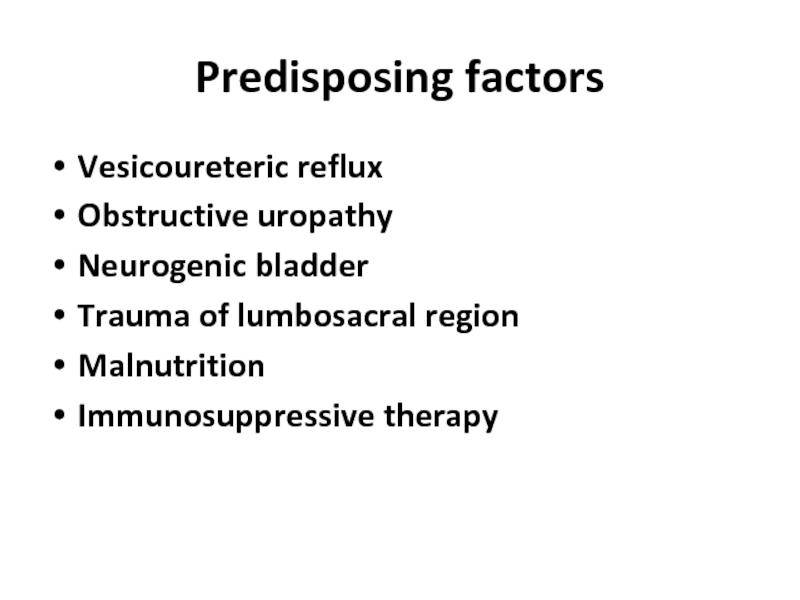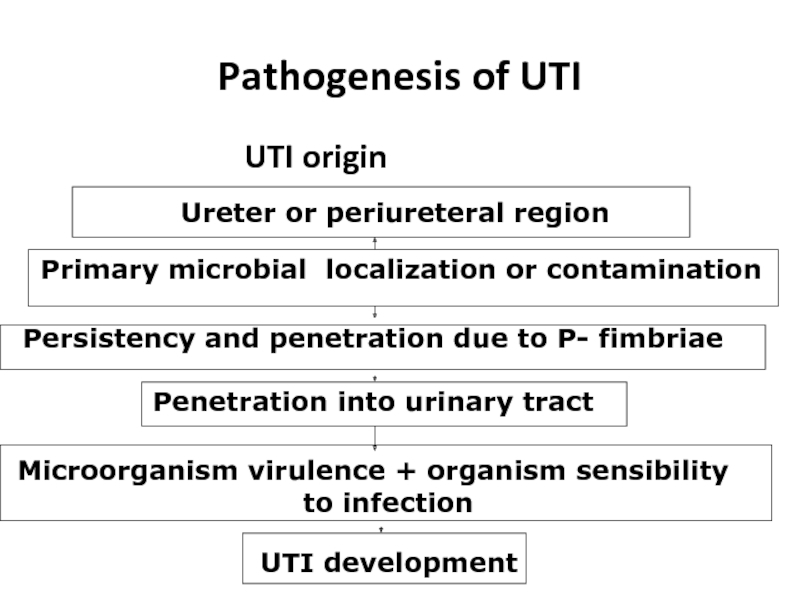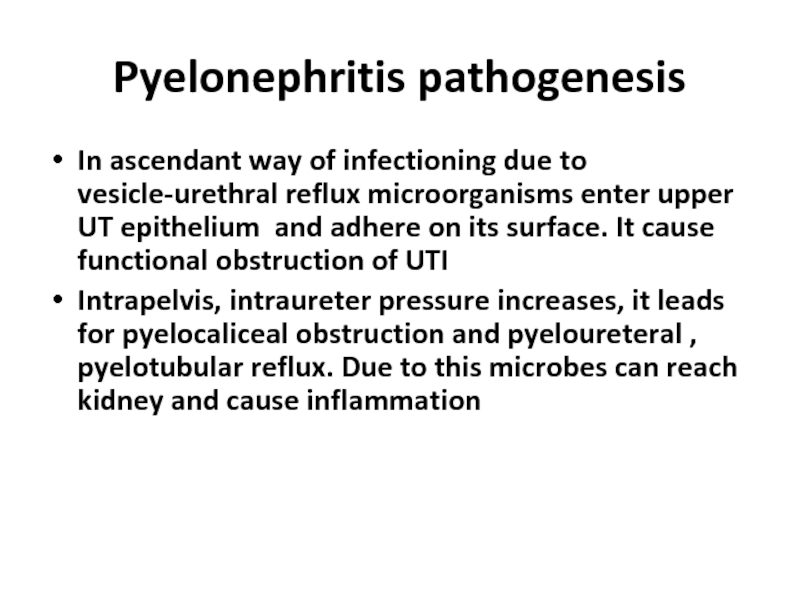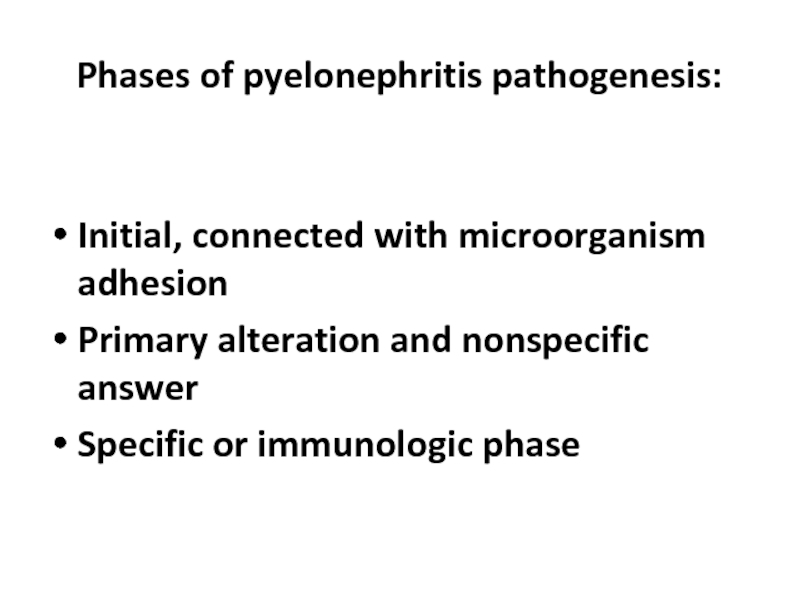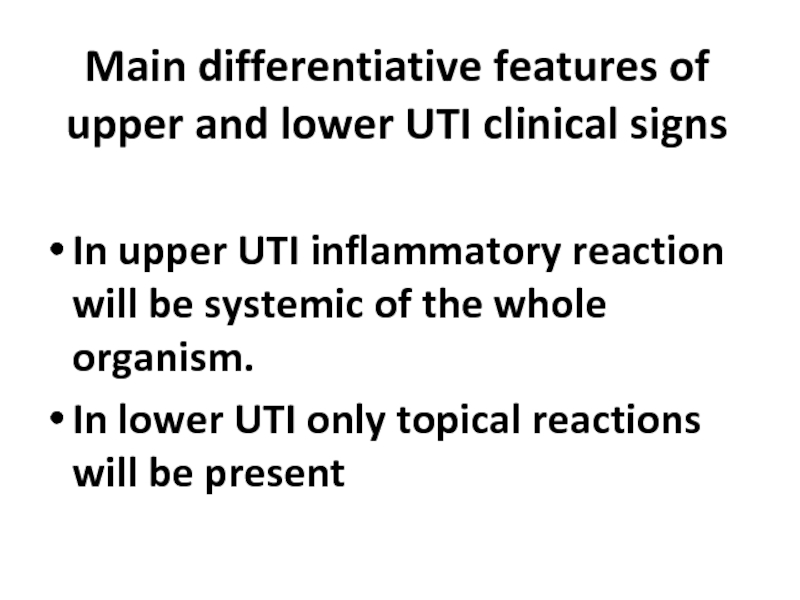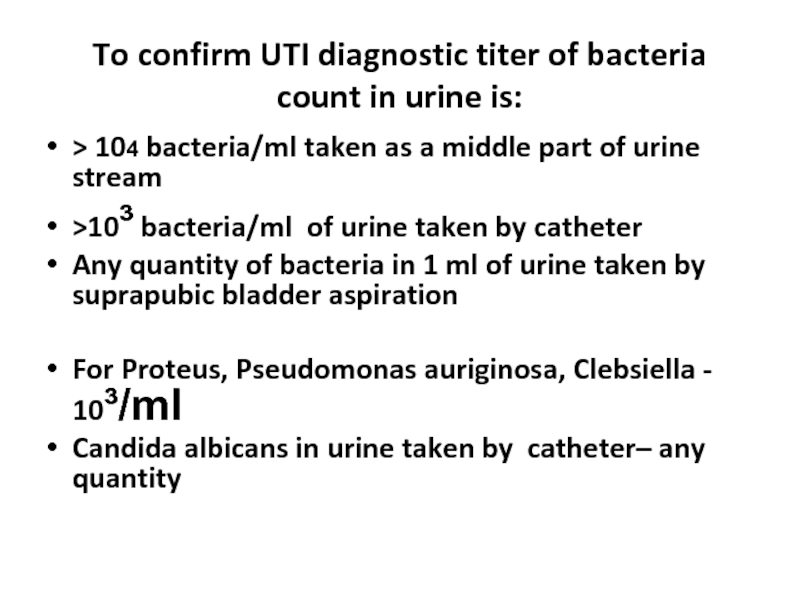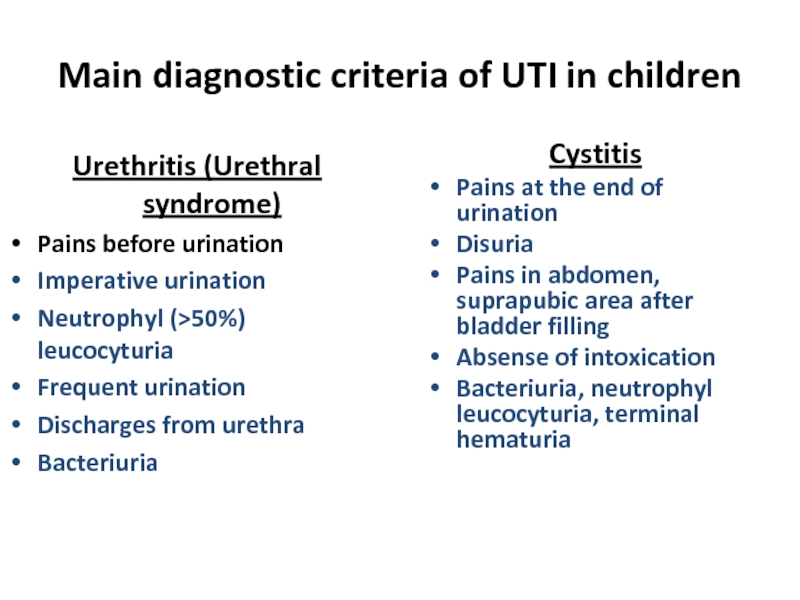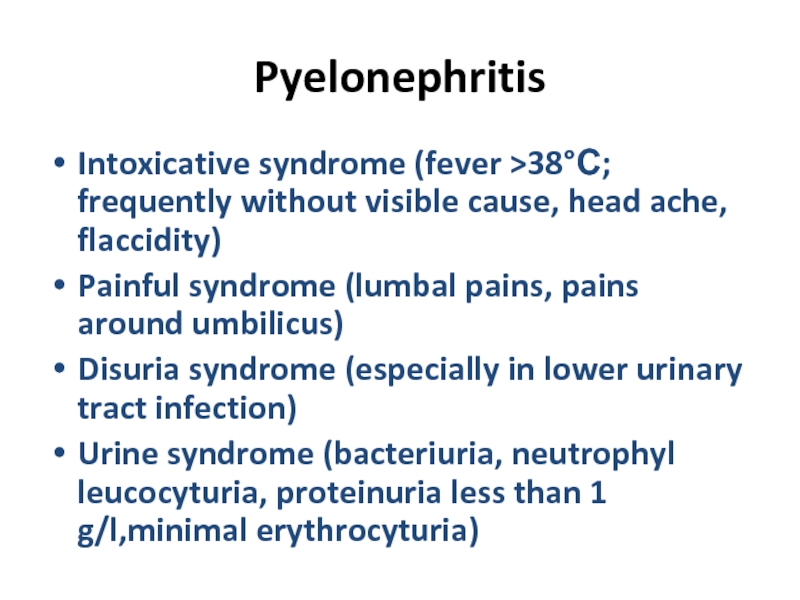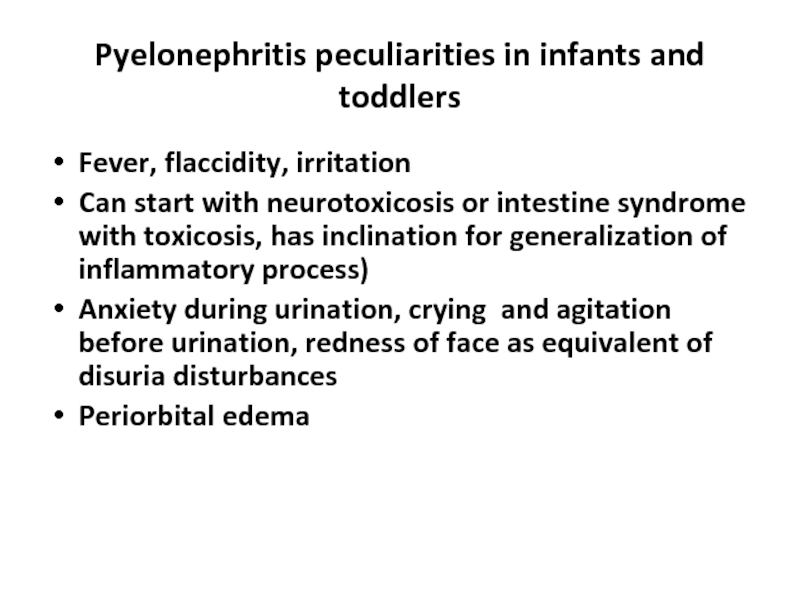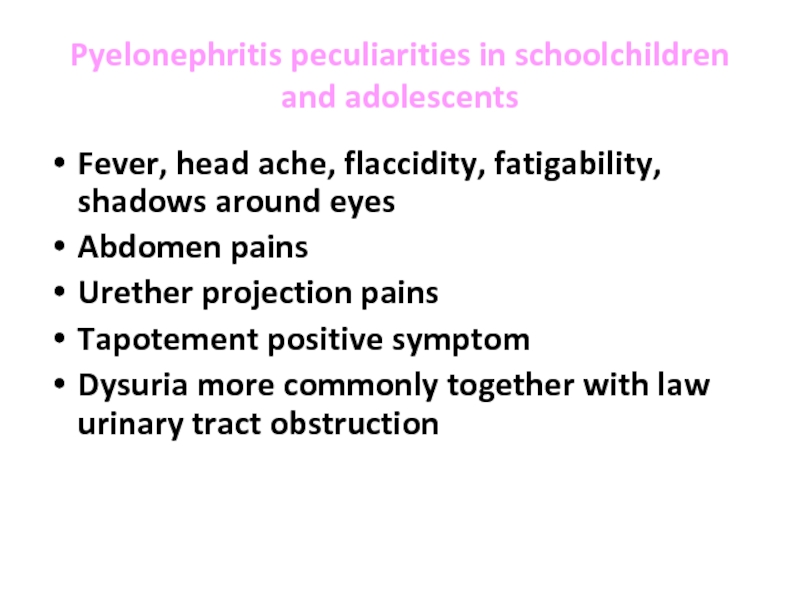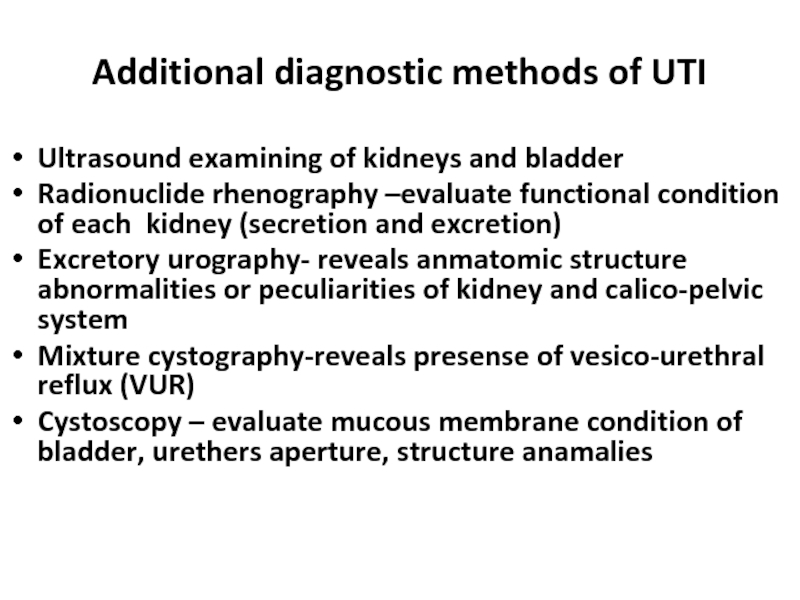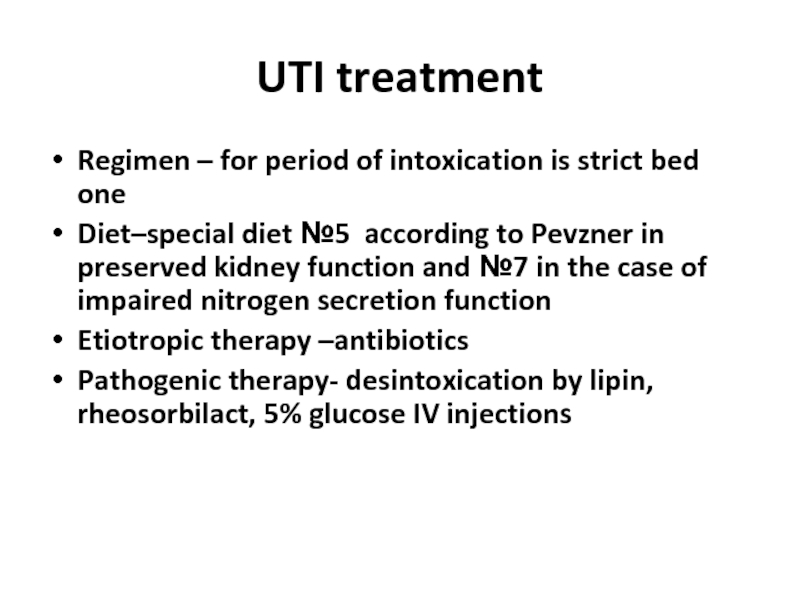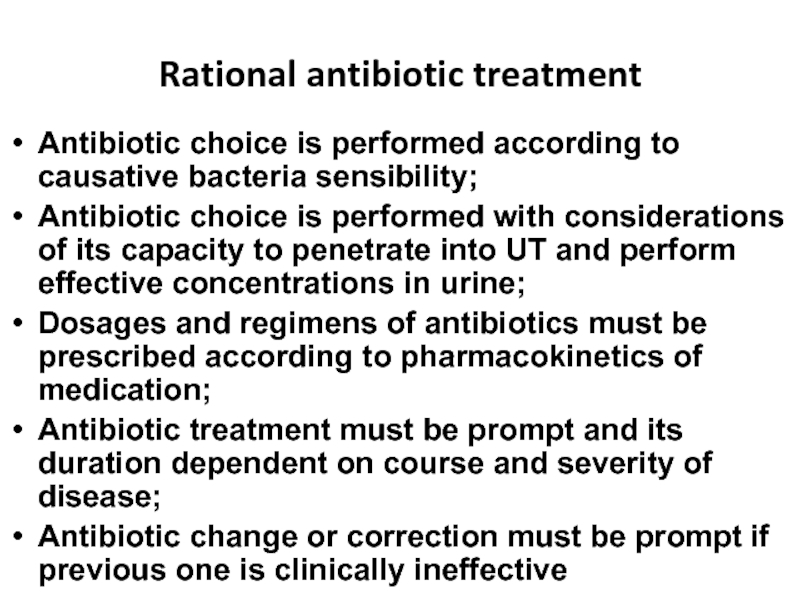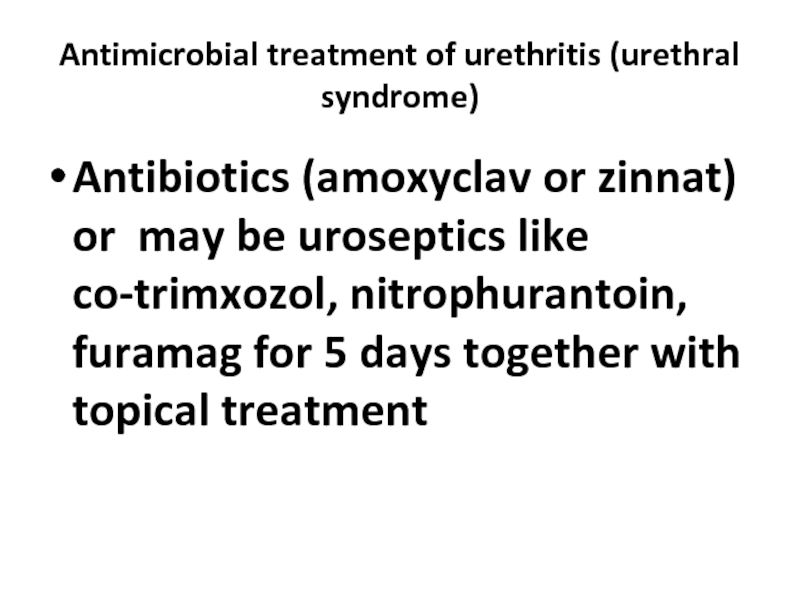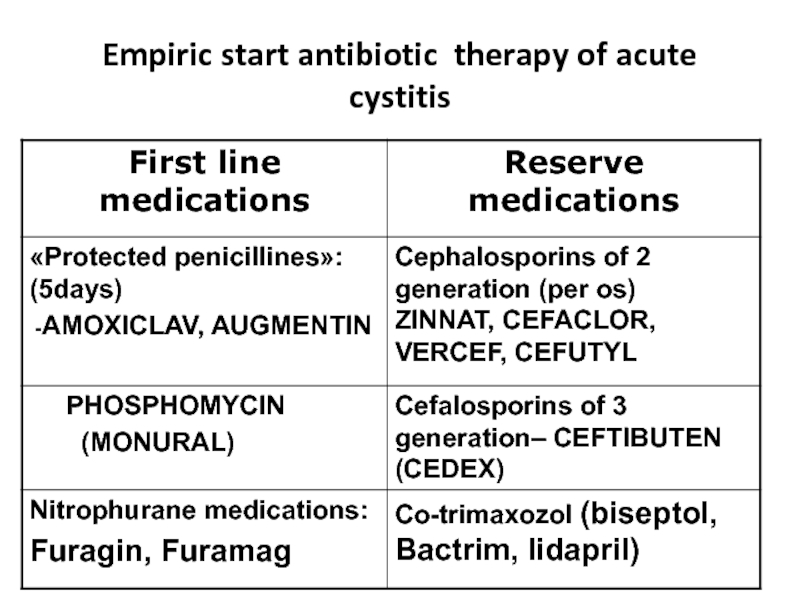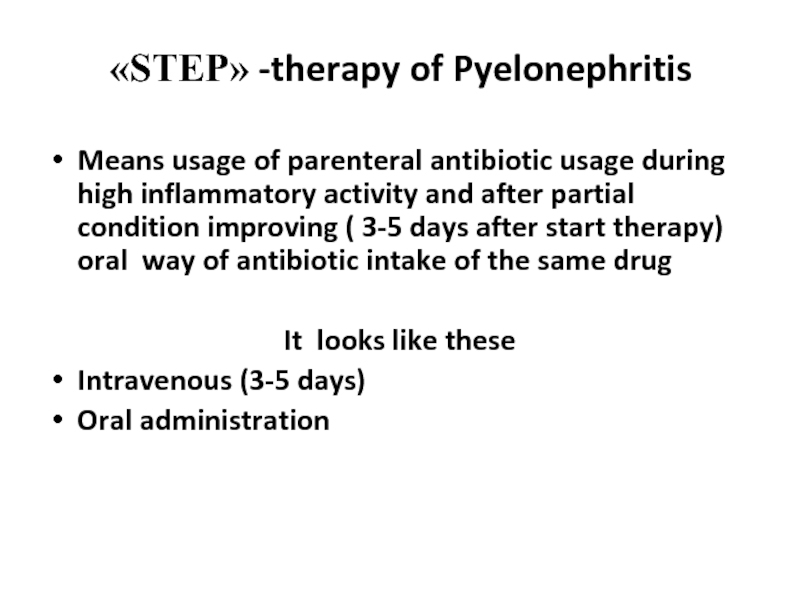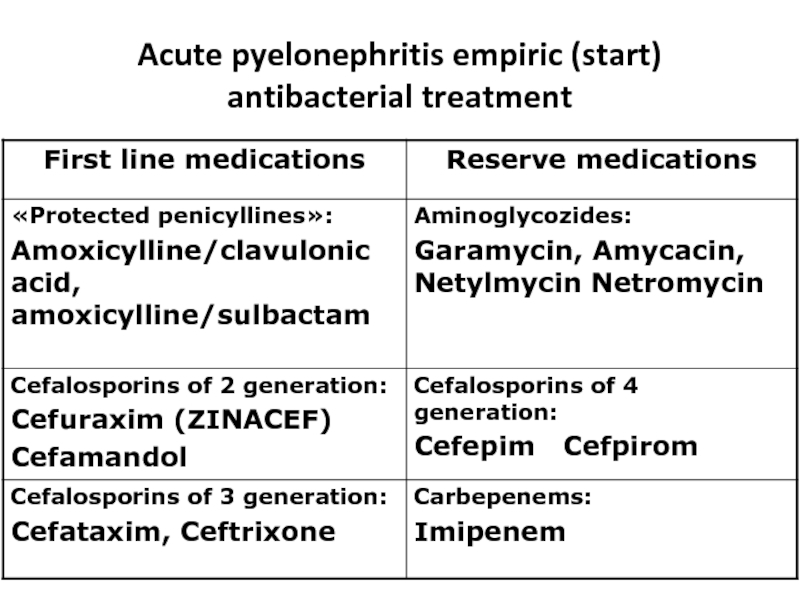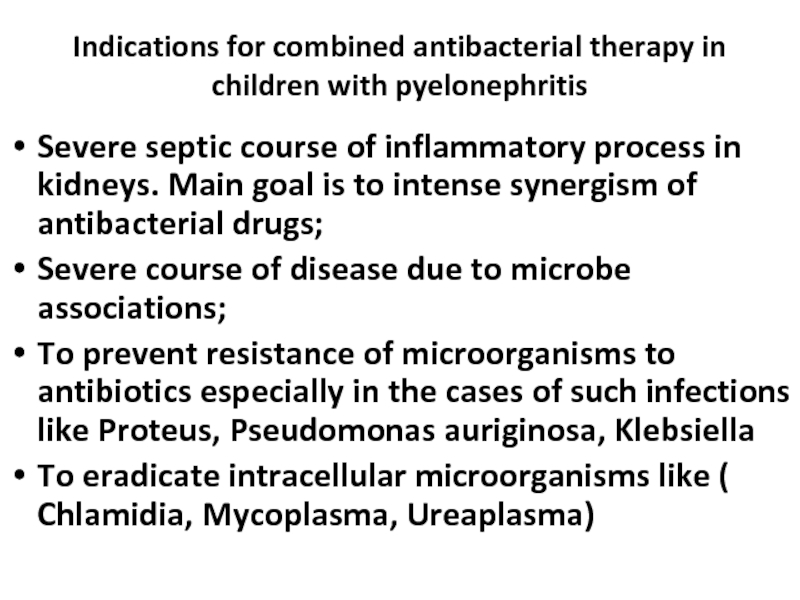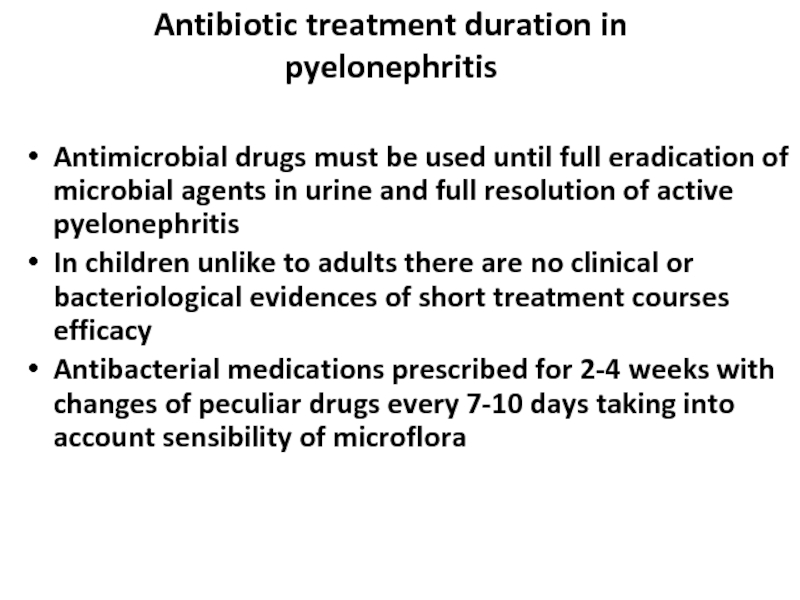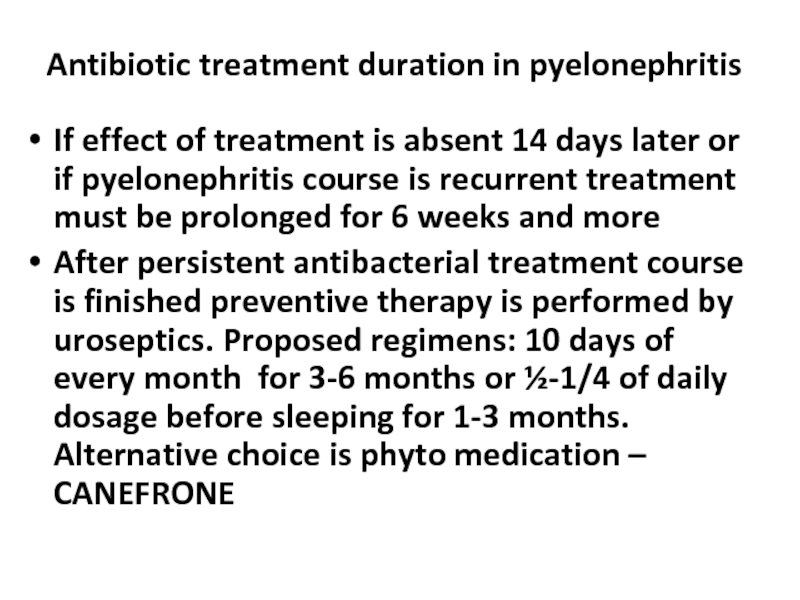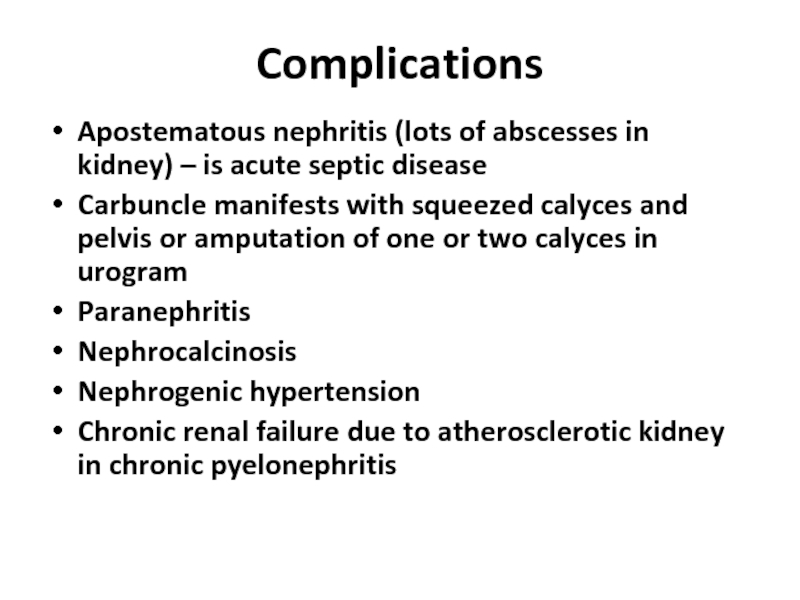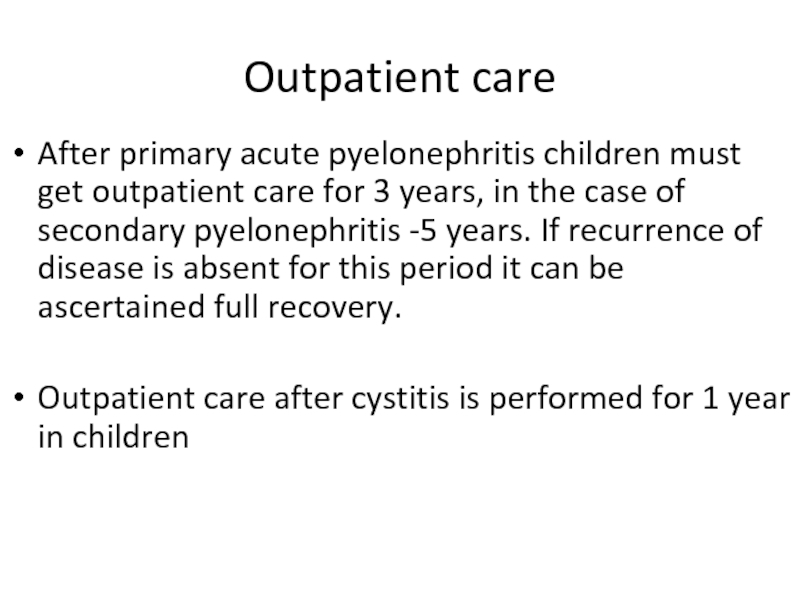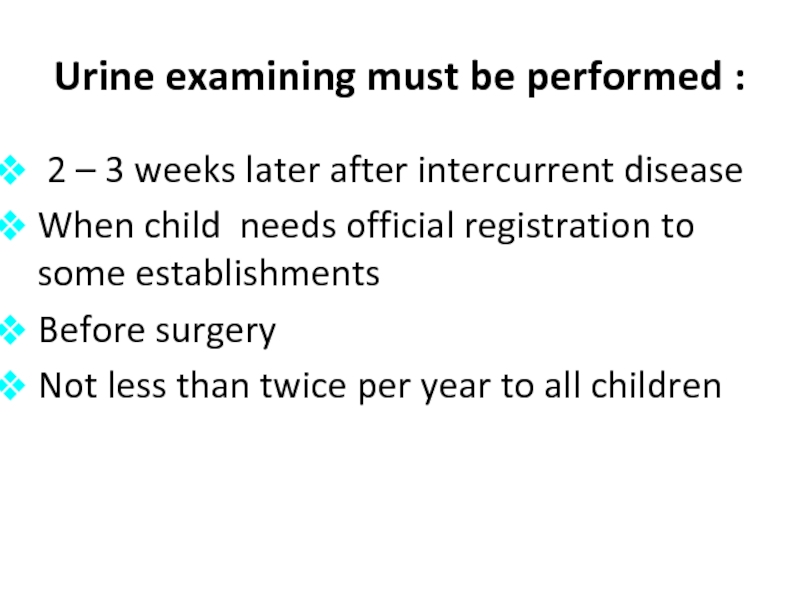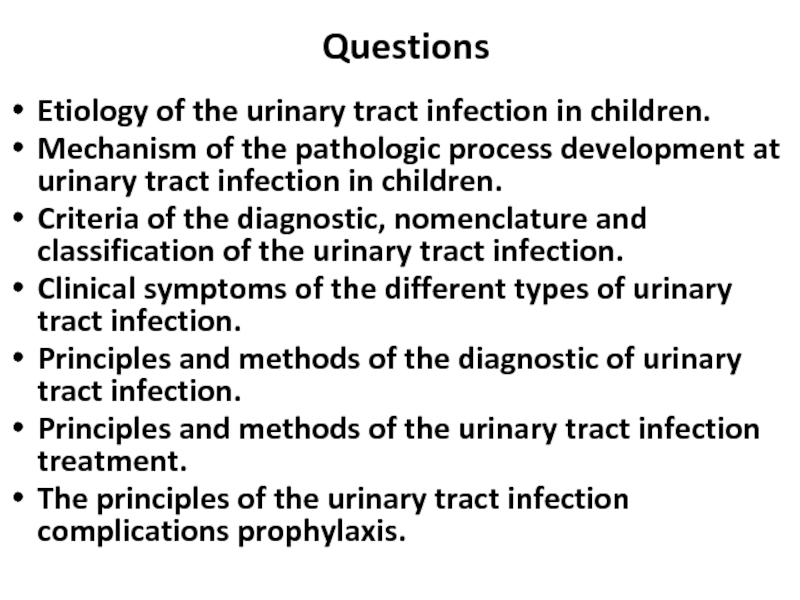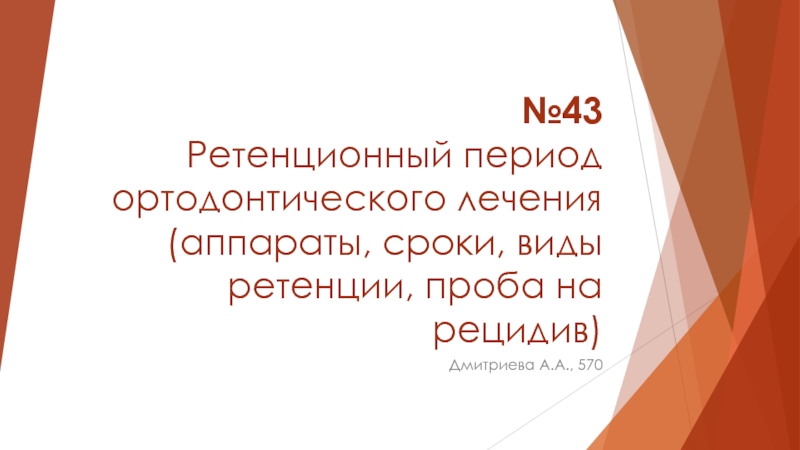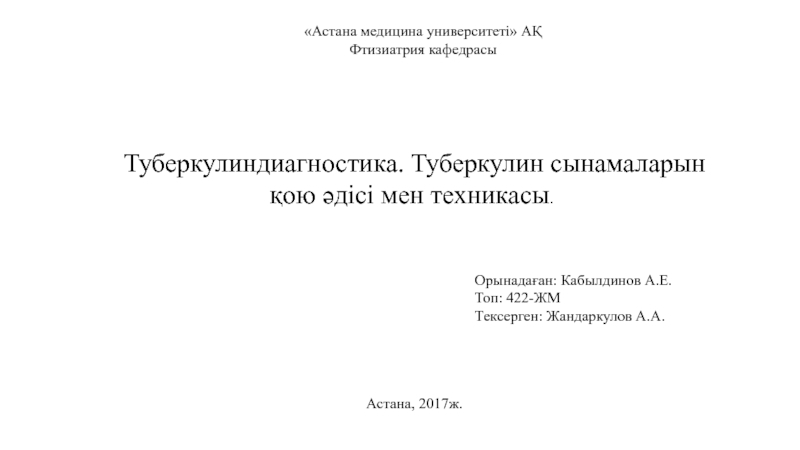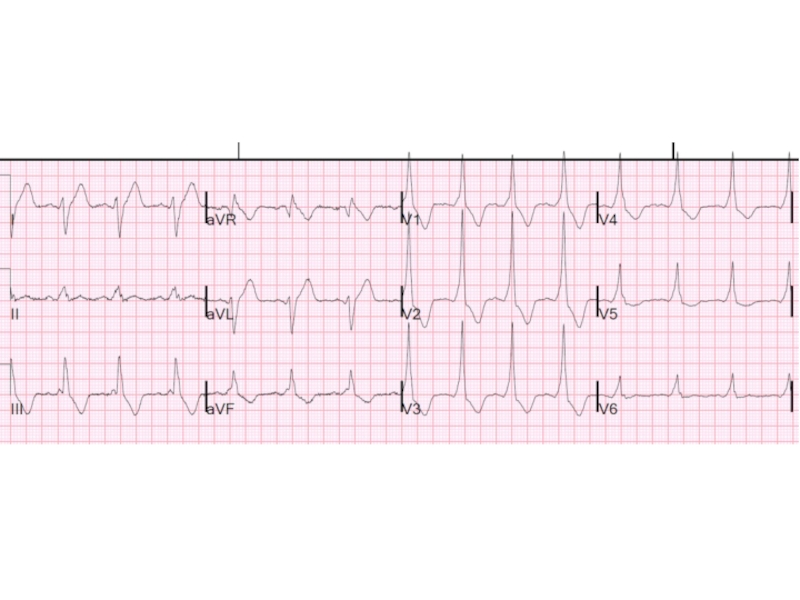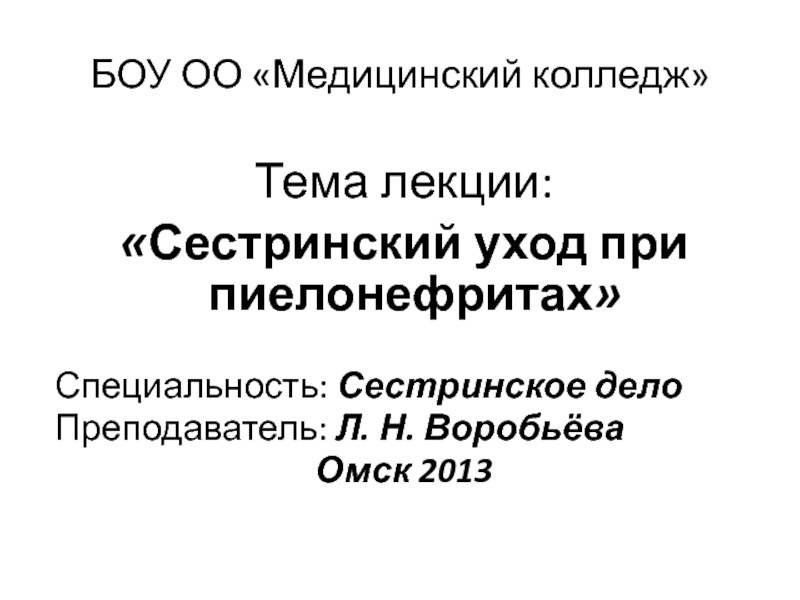- Главная
- Разное
- Дизайн
- Бизнес и предпринимательство
- Аналитика
- Образование
- Развлечения
- Красота и здоровье
- Финансы
- Государство
- Путешествия
- Спорт
- Недвижимость
- Армия
- Графика
- Культурология
- Еда и кулинария
- Лингвистика
- Английский язык
- Астрономия
- Алгебра
- Биология
- География
- Детские презентации
- Информатика
- История
- Литература
- Маркетинг
- Математика
- Медицина
- Менеджмент
- Музыка
- МХК
- Немецкий язык
- ОБЖ
- Обществознание
- Окружающий мир
- Педагогика
- Русский язык
- Технология
- Физика
- Философия
- Химия
- Шаблоны, картинки для презентаций
- Экология
- Экономика
- Юриспруденция
Urinary tract infections in children презентация
Содержание
- 1. Urinary tract infections in children
- 2. Plan of the lecture 1. Definition
- 3. Urinary tract infections (UTI) UTI take the
- 4. Definition UTI is inflammatory process in urinary
- 5. UTI (Inflammatory process in urinary tract without
- 6. UTI classification Urethral syndrome: Acute
- 7. Pyelonephritis classification in children (2 Congress of Ukraine nephrologists, 2005)
- 8. Asymptomatic bacteriuria is presence of bacteria in
- 9. UTI morbidity dependent from age and gender
- 10. Risk factors of UTI: Pyelonephritis in pregnant
- 11. Main ways of infectioning in UTI Hematogenic Urinegenic Lymphogenic
- 12. Pathogen frequency in UTI
- 13. Predisposing factors Vesicoureteric reflux Obstructive uropathy Neurogenic bladder Trauma of lumbosacral region Malnutrition Immunosuppressive therapy
- 14. Pathogenesis of UTI UTI origin Ureter or
- 15. Pyelonephritis pathogenesis In ascendant way of infectioning
- 16. Phases of pyelonephritis pathogenesis: Initial, connected with
- 17. Main differentiative features of upper and lower
- 18. To confirm UTI diagnostic titer of bacteria
- 19. Main diagnostic criteria of UTI in children
- 20. Pyelonephritis Intoxicative syndrome (fever >38°С; frequently without
- 21. Pyelonephritis peculiarities in infants and toddlers Fever,
- 22. Pyelonephritis peculiarities in schoolchildren and adolescents Fever,
- 23. Additional diagnostic methods of UTI Ultrasound examining
- 24. UTI treatment Regimen – for period of
- 25. Rational antibiotic treatment Antibiotic choice is performed
- 26. Antimicrobial treatment of urethritis (urethral syndrome) Antibiotics
- 27. Empiric start antibiotic therapy of acute cystitis
- 28. «STEP» -therapy of Pyelonephritis Means usage of
- 29. Acute pyelonephritis empiric (start) antibacterial treatment
- 30. Indications for combined antibacterial therapy in children
- 31. Antibiotic treatment duration in pyelonephritis
- 32. Antibiotic treatment duration in pyelonephritis
- 33. Complications Apostematous nephritis (lots of abscesses in
- 34. Outpatient care After primary acute pyelonephritis children
- 35. Urine examining must be performed :
- 36. Questions Etiology of the urinary
Слайд 2Plan of the lecture
1. Definition of urinary tract infections in
2. Risk factors and etiology
3. Pathogenesis
4. Classification 5. Diagnostic criteria
6. Treatment and prophylaxis
Слайд 3Urinary tract infections (UTI)
UTI take the 1-st place among another nephropathies
They
There are 85% of hospitalizations to nephrologic departments due to UTI
UTI morbidity is -19,1 cases for 1000 children
For the last decade UTI morbidity is twice more among children and three times more among adolescents
В.Г. Майданник, 2005г.
Слайд 4Definition
UTI is inflammatory process in urinary tract without indication of affection
So, UTI involve big group of diseases caused by microbial invasion into urinary system
Слайд 5UTI
(Inflammatory process in urinary tract without indication of affection level)
Uncomplicated UTI
Cystitis
Urethritis
Urerthral syndrome
Complicated UTI of upper UT
Pyelonephritis
Abscesses or kidney carbuncle
Слайд 6
UTI classification
Urethral syndrome:
Acute
Chronic – more than 2 months
Cystitis:
Acute
Chronic –more
Слайд 8Asymptomatic bacteriuria is presence of bacteria in urine in diagnostic titer
Symptom is confirmed if the same etiologic factor has been present in 2-3 samples of urine tests
Слайд 10Risk factors of UTI:
Pyelonephritis in pregnant women
Chronic infectious focuses especially urogenital
Inflammatory diseases of girls like vulvitis, vulvovaginitis
Toxicosis during I and II period of pregnancies
Inherited predisposition for kidney diseases
Metabolic disorders in parents and relatives
Job hazard of mother during pregnancy
Слайд 13Predisposing factors
Vesicoureteric reflux
Obstructive uropathy
Neurogenic bladder
Trauma of lumbosacral region
Malnutrition
Immunosuppressive therapy
Слайд 14Pathogenesis of UTI
UTI origin
Ureter or periureteral region
Primary microbial localization or contamination
Persistency
Penetration into urinary tract
Microorganism virulence + organism sensibility to infection
UTI development
Слайд 15Pyelonephritis pathogenesis
In ascendant way of infectioning due to vesicle-urethral reflux microorganisms
Intrapelvis, intraureter pressure increases, it leads for pyelocaliceal obstruction and pyeloureteral , pyelotubular reflux. Due to this microbes can reach kidney and cause inflammation
Слайд 16Phases of pyelonephritis pathogenesis:
Initial, connected with microorganism adhesion
Primary alteration and nonspecific
Specific or immunologic phase
Слайд 17Main differentiative features of upper and lower UTI clinical signs
In upper
In lower UTI only topical reactions will be present
Слайд 18To confirm UTI diagnostic titer of bacteria count in urine is:
>
>10³ bacteria/ml of urine taken by catheter
Any quantity of bacteria in 1 ml of urine taken by suprapubic bladder aspiration
For Proteus, Pseudomonas auriginosa, Clebsiella - 10³/ml
Candida albicans in urine taken by catheter– any quantity
Слайд 19Main diagnostic criteria of UTI in children
Urethritis (Urethral syndrome)
Pains before urination
Imperative
Neutrophyl (>50%) leucocyturia
Frequent urination
Discharges from urethra
Bacteriuria
Cystitis
Pains at the end of urination
Disuria
Pains in abdomen, suprapubic area after bladder filling
Absense of intoxication
Bacteriuria, neutrophyl leucocyturia, terminal hematuria
Слайд 20Pyelonephritis
Intoxicative syndrome (fever >38°С; frequently without visible cause, head ache, flaccidity)
Painful
Disuria syndrome (especially in lower urinary tract infection)
Urine syndrome (bacteriuria, neutrophyl leucocyturia, proteinuria less than 1 g/l,minimal erythrocyturia)
Слайд 21Pyelonephritis peculiarities in infants and toddlers
Fever, flaccidity, irritation
Can start with neurotoxicosis
Anxiety during urination, crying and agitation before urination, redness of face as equivalent of disuria disturbances
Periorbital edema
Слайд 22Pyelonephritis peculiarities in schoolchildren and adolescents
Fever, head ache, flaccidity, fatigability, shadows
Abdomen pains
Urether projection pains
Tapotement positive symptom
Dysuria more commonly together with law urinary tract obstruction
Слайд 23Additional diagnostic methods of UTI
Ultrasound examining of kidneys and bladder
Radionuclide rhenography
Excretory urography- reveals anmatomic structure abnormalities or peculiarities of kidney and calico-pelvic system
Mixture cystography-reveals presense of vesico-urethral reflux (VUR)
Cystoscopy – evaluate mucous membrane condition of bladder, urethers aperture, structure anamalies
Слайд 24UTI treatment
Regimen – for period of intoxication is strict bed one
Diet–special
Etiotropic therapy –antibiotics
Pathogenic therapy- desintoxication by lipin, rheosorbilact, 5% glucose IV injections
Слайд 25Rational antibiotic treatment
Antibiotic choice is performed according to causative bacteria sensibility;
Antibiotic
Dosages and regimens of antibiotics must be prescribed according to pharmacokinetics of medication;
Antibiotic treatment must be prompt and its duration dependent on course and severity of disease;
Antibiotic change or correction must be prompt if previous one is clinically ineffective
Слайд 26Antimicrobial treatment of urethritis (urethral syndrome)
Antibiotics (amoxyclav or zinnat) or may
Слайд 28«STEP» -therapy of Pyelonephritis
Means usage of parenteral antibiotic usage during high
It looks like these
Intravenous (3-5 days)
Oral administration
Слайд 30Indications for combined antibacterial therapy in children with pyelonephritis
Severe septic course
Severe course of disease due to microbe associations;
To prevent resistance of microorganisms to antibiotics especially in the cases of such infections like Proteus, Pseudomonas auriginosa, Klebsiella
To eradicate intracellular microorganisms like ( Chlamidia, Mycoplasma, Ureaplasma)
Слайд 31
Antibiotic treatment duration in pyelonephritis
Antimicrobial drugs must be used until full
In children unlike to adults there are no clinical or bacteriological evidences of short treatment courses efficacy
Antibacterial medications prescribed for 2-4 weeks with changes of peculiar drugs every 7-10 days taking into account sensibility of microflora
Слайд 32Antibiotic treatment duration in pyelonephritis
If effect of treatment is absent
After persistent antibacterial treatment course is finished preventive therapy is performed by uroseptics. Proposed regimens: 10 days of every month for 3-6 months or ½-1/4 of daily dosage before sleeping for 1-3 months. Alternative choice is phyto medication – CANEFRONE
Слайд 33Complications
Apostematous nephritis (lots of abscesses in kidney) – is acute septic
Carbuncle manifests with squeezed calyces and pelvis or amputation of one or two calyces in urogram
Paranephritis
Nephrocalcinosis
Nephrogenic hypertension
Chronic renal failure due to atherosclerotic kidney in chronic pyelonephritis
Слайд 34Outpatient care
After primary acute pyelonephritis children must get outpatient care for
Outpatient care after cystitis is performed for 1 year in children
Слайд 35Urine examining must be performed :
2 – 3 weeks later
When child needs official registration to some establishments
Before surgery
Not less than twice per year to all children
Слайд 36
Questions
Etiology of the urinary tract infection in children.
Mechanism of the pathologic
Criteria of the diagnostic, nomenclature and classification of the urinary tract infection.
Clinical symptoms of the different types of urinary tract infection.
Principles and methods of the diagnostic of urinary tract infection.
Principles and methods of the urinary tract infection treatment.
The principles of the urinary tract infection complications prophylaxis.
